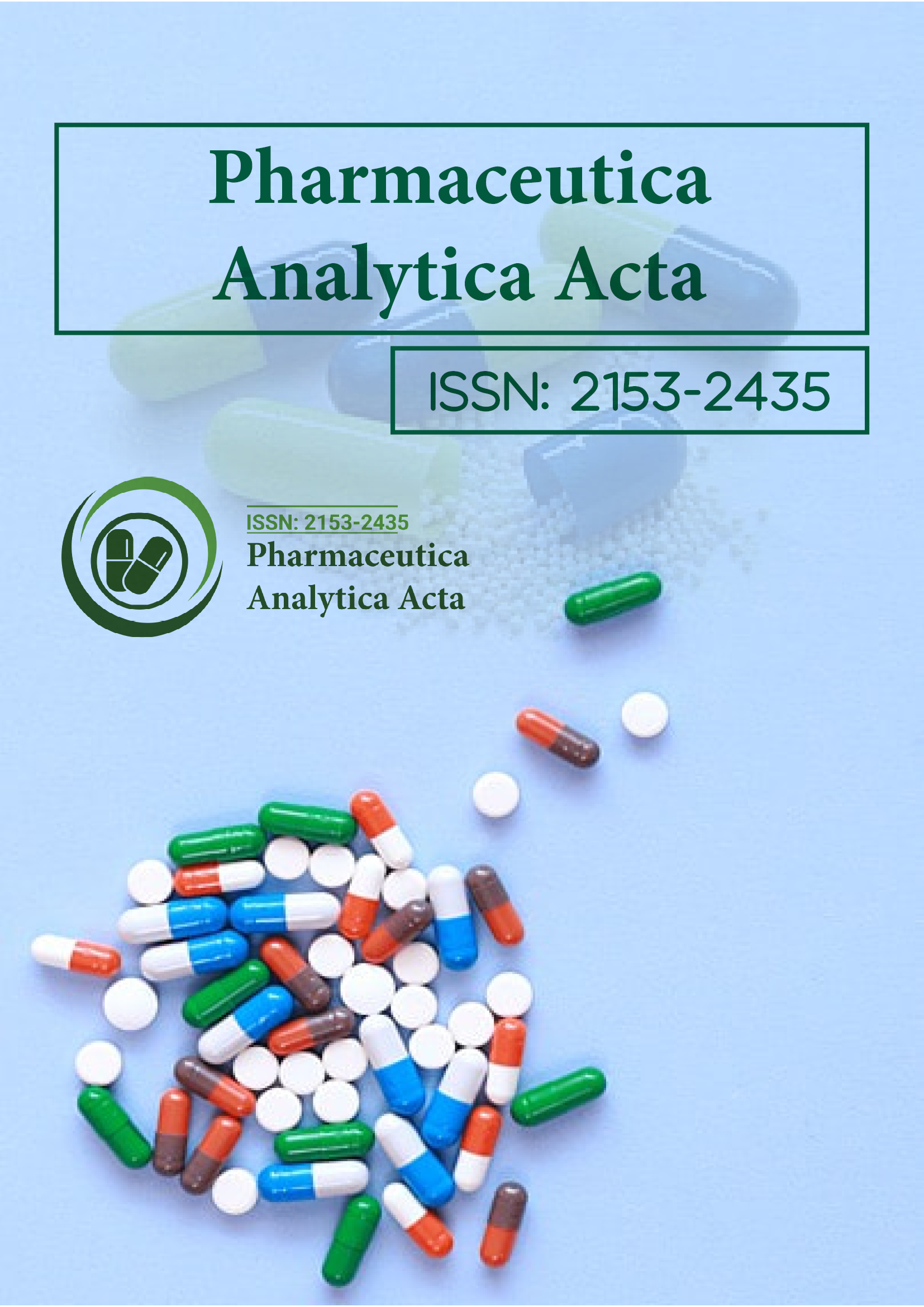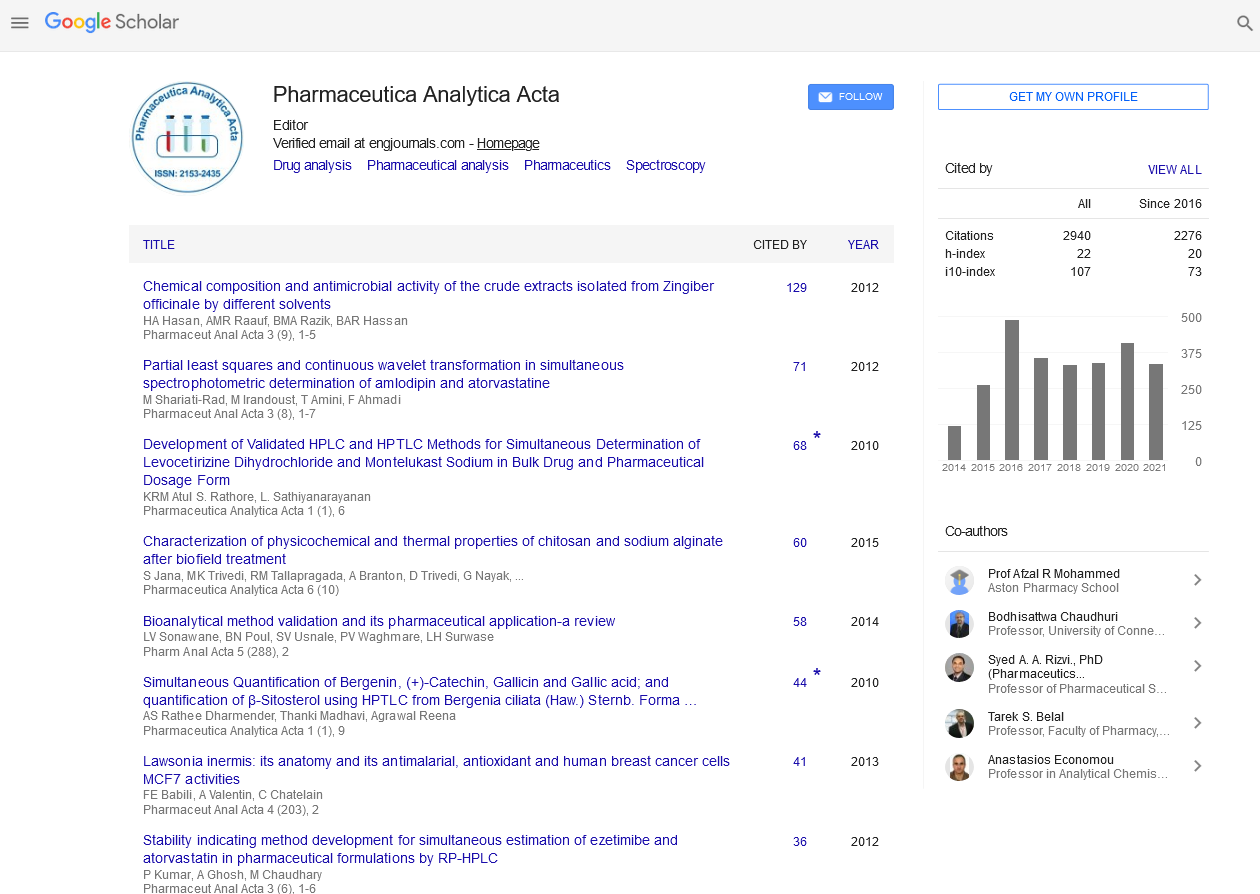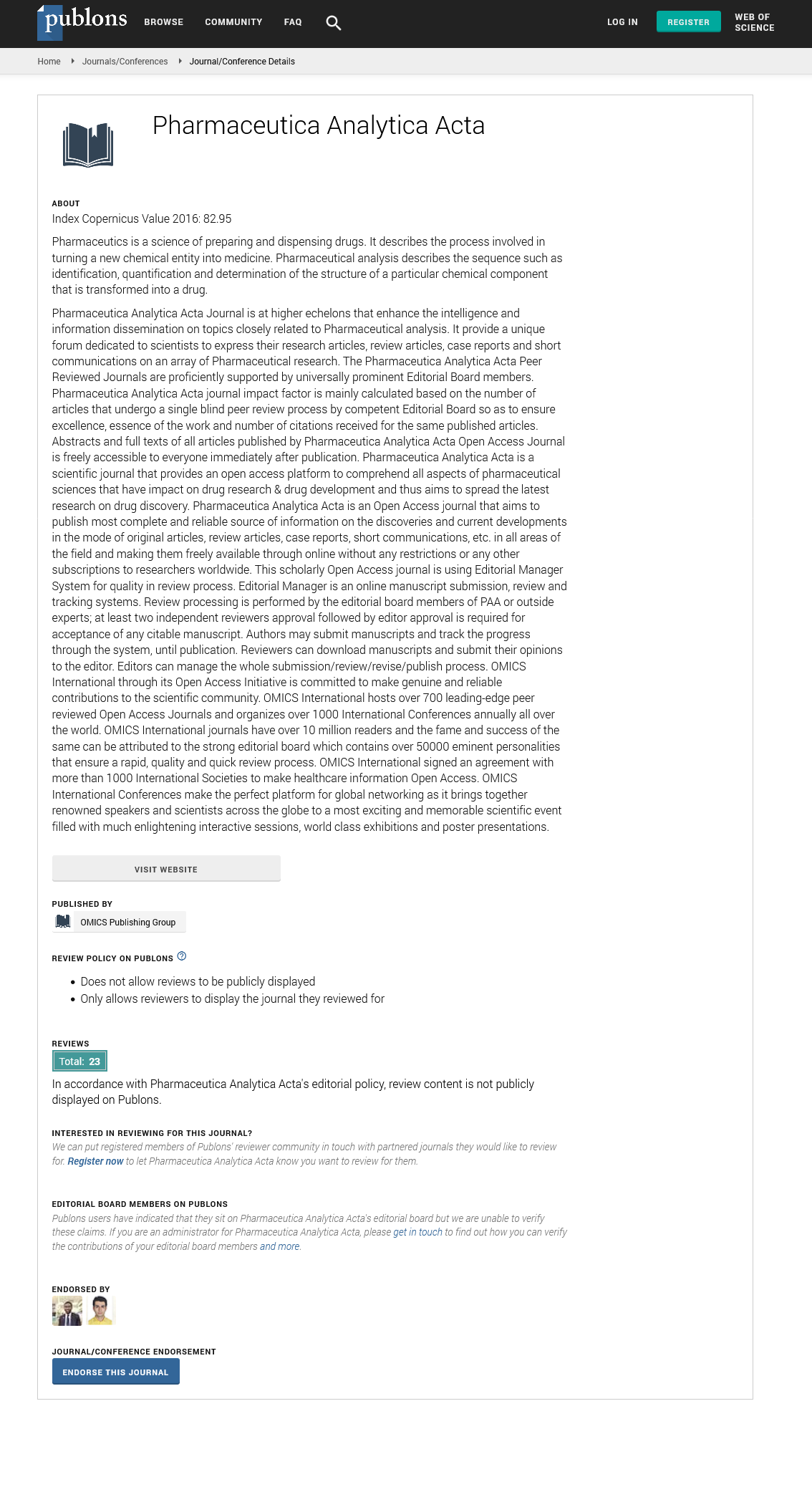Indexed In
- Open J Gate
- Genamics JournalSeek
- Academic Keys
- JournalTOCs
- The Global Impact Factor (GIF)
- China National Knowledge Infrastructure (CNKI)
- Ulrich's Periodicals Directory
- RefSeek
- Hamdard University
- EBSCO A-Z
- OCLC- WorldCat
- Publons
- Geneva Foundation for Medical Education and Research
- Euro Pub
- Google Scholar
Useful Links
Share This Page
Journal Flyer

Open Access Journals
- Agri and Aquaculture
- Biochemistry
- Bioinformatics & Systems Biology
- Business & Management
- Chemistry
- Clinical Sciences
- Engineering
- Food & Nutrition
- General Science
- Genetics & Molecular Biology
- Immunology & Microbiology
- Medical Sciences
- Neuroscience & Psychology
- Nursing & Health Care
- Pharmaceutical Sciences
Perspective - (2023) Volume 14, Issue 6
Illuminating Insights and Exploring Biosensors in Pharmaceutical Analysis
Ling Yang*Received: 13-Nov-2023, Manuscript No. PAA-23-24912; Editor assigned: 16-Nov-2023, Pre QC No. PAA-23-24912 (PQ); Reviewed: 30-Nov-2023, QC No. PAA-23-24912; Revised: 07-Dec-2023, Manuscript No. PAA-23-24912 (R); Published: 14-Dec-2023, DOI: 10.35248/2153-2435.23.14.760
Description
Biosensors have emerged as powerful analytical tools revolutionizing pharmaceutical analysis. These innovative devices combine biological recognition elements with transducers to detect and quantify target analytes with high specificity and sensitivity. Biosensors operate on the principle of biological recognition, where specific interactions between biomolecules and target analytes trigger measurable signals. The key components of a biosensor include a biological recognition element (e.g., enzymes, antibodies, nucleic acids), a transducer (e.g., electrochemical, optical, piezoelectric), and a signal processing system. Upon binding of the target analyte to the recognition element, changes in signal output, such as electrical current, optical absorption, or mass, are detected and quantified, providing real-time information on analyte concentration.
Biosensors offer a wide range of applications in pharmaceutical analysis, including drug discovery, quality control, pharmacokinetics, and environmental monitoring. In drug discovery, biosensors facilitate High-Throughput Screening of compound libraries by enabling rapid and sensitive detection of biomolecular interactions, such as enzyme-substrate binding or receptor-ligand interactions. Additionally, biosensors play an important role in monitoring drug stability, identifying impurities, and assessing drug formulation characteristics during the development and manufacturing processes.
Quality control is another area where biosensors excel, providing rapid and on-site analysis of pharmaceutical products for potency, purity, and stability. These portable devices offer advantages such as reduced sample preparation time, minimal reagent consumption, and real-time monitoring capabilities, making them ideal for point-of-care testing in pharmaceutical production facilities and regulatory inspections.
Pharmacokinetic studies benefit greatly from biosensor technology, enabling the quantification of drug concentrations in biological fluids with high accuracy and precision. Biosensors offer real-time monitoring of drug levels in blood, urine, and tissue samples, facilitating pharmacokinetic profiling, dose optimization, and therapeutic drug monitoring in clinical settings.
Environmental monitoring of pharmaceuticals is another critical application area where biosensors play a pivotal role. These devices enable the detection and quantification of pharmaceutical residues in water, soil, and air samples, providing valuable insights into environmental contamination and human exposure risks. Biosensors offer rapid, cost-effective, and sensitive detection of trace-level pharmaceuticals, contributing to environmental protection and public health.
Recent advancements in biosensor technology had led to the development of next-generation devices with improved sensitivity, specificity, and multiplexing capabilities. Miniaturization and integration of biosensors with microfluidic platforms have enabled portable, point-of-care devices for on-site analysis in resource-limited settings. Furthermore, the incorporation of nanomaterials, such as graphene, carbon nanotubes, and nanoparticles, enhances the performance of biosensors by increasing surface area, conductivity, and signal amplification.
Functionalization of biosensor surfaces with molecular recognition elements, such as aptamers and molecularly imprinted polymers, offers enhanced selectivity and stability for target analyte detection. Moreover, the integration of biosensors with smartphone apps and wireless communication systems enables remote monitoring, data sharing, and real-time decision making in healthcare and environmental monitoring applications.
The future of biosensors in pharmaceutical analysis holds immense potential, with ongoing research focused on enhancing device performance, expanding application areas, and addressing emerging challenges. Advances in biomarker discovery and personalized medicine are driving the demand for biosensors capable of multiplexed detection of multiple analytes in complex biological samples. Integration of artificial intelligence and machine learning algorithms with biosensor data analysis holds potential for predictive modeling, pattern recognition, and personalized treatment strategies in healthcare.
Furthermore, the development of biosensors for novel targets, such as exosomes, microRNAs, and circulating tumor cells, opens new avenues for early disease diagnosis, prognosis, and therapeutic monitoring. Additionally, the growing emphasis on sustainability and green analytical chemistry is driving the development of eco-friendly biosensors using biodegradable materials and renewable energy sources.
In conclusion, biosensors represent a versatile and powerful tool in pharmaceutical analysis, offering rapid, sensitive, and selective detection of target analytes across various applications. From drug discovery and quality control to pharmacokinetics and environmental monitoring, biosensors play an important role in advancing healthcare, pharmaceutical manufacturing, and environmental protection. With continued advancements in technology and interdisciplinary collaborations, biosensors are assured to revolutionize pharmaceutical analysis and prepare for personalized medicine and sustainable healthcare solutions.
Citation: Yang L (2023) Illuminating Insights and Exploring Biosensors in Pharmaceutical Analysis. Pharm Anal Acta. 14:760.
Copyright: © 2023 Yang L. This is an open-access article distributed under the terms of the Creative Commons Attribution License, which permits unrestricted use, distribution, and reproduction in any medium, provided the original author and source are credited.


